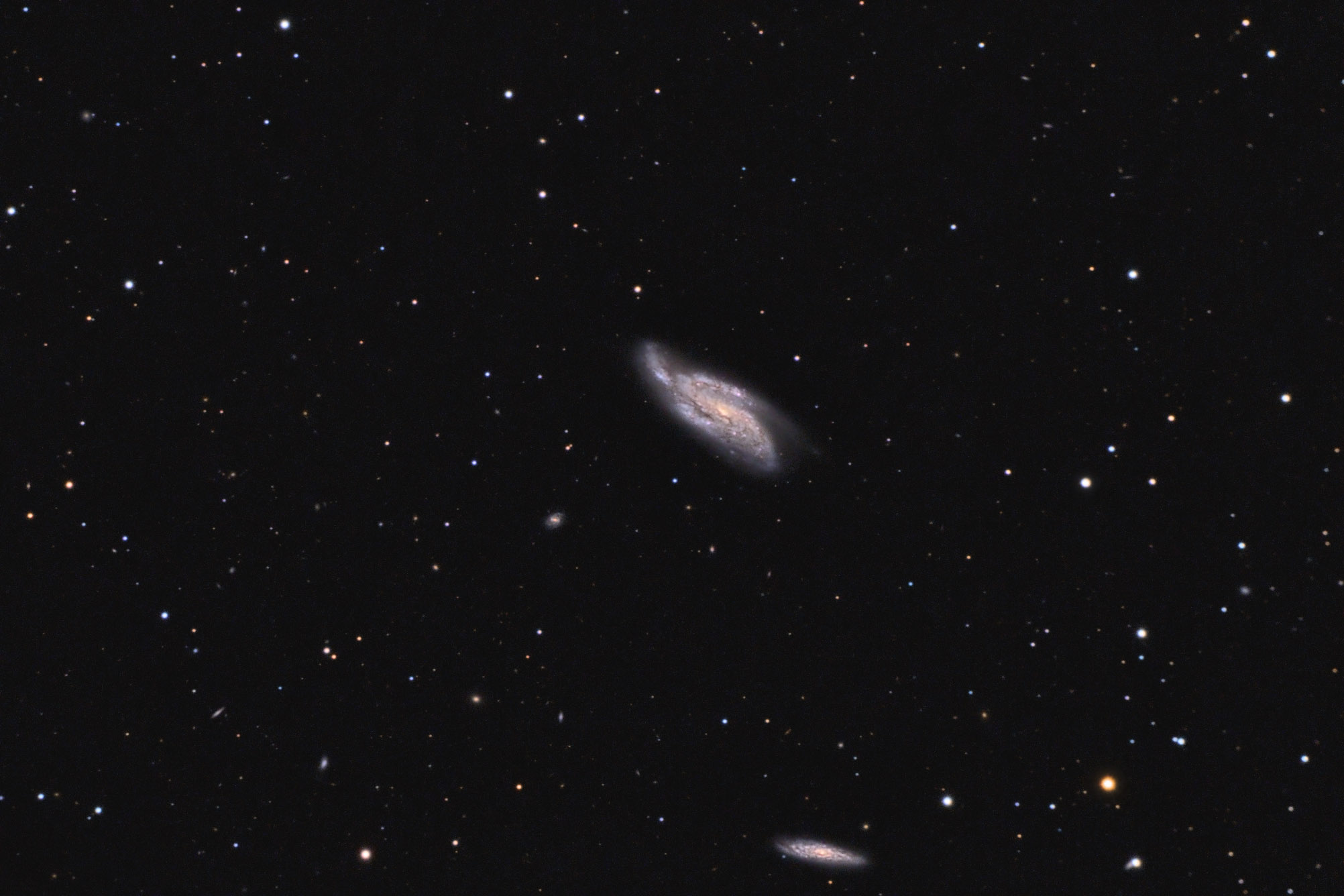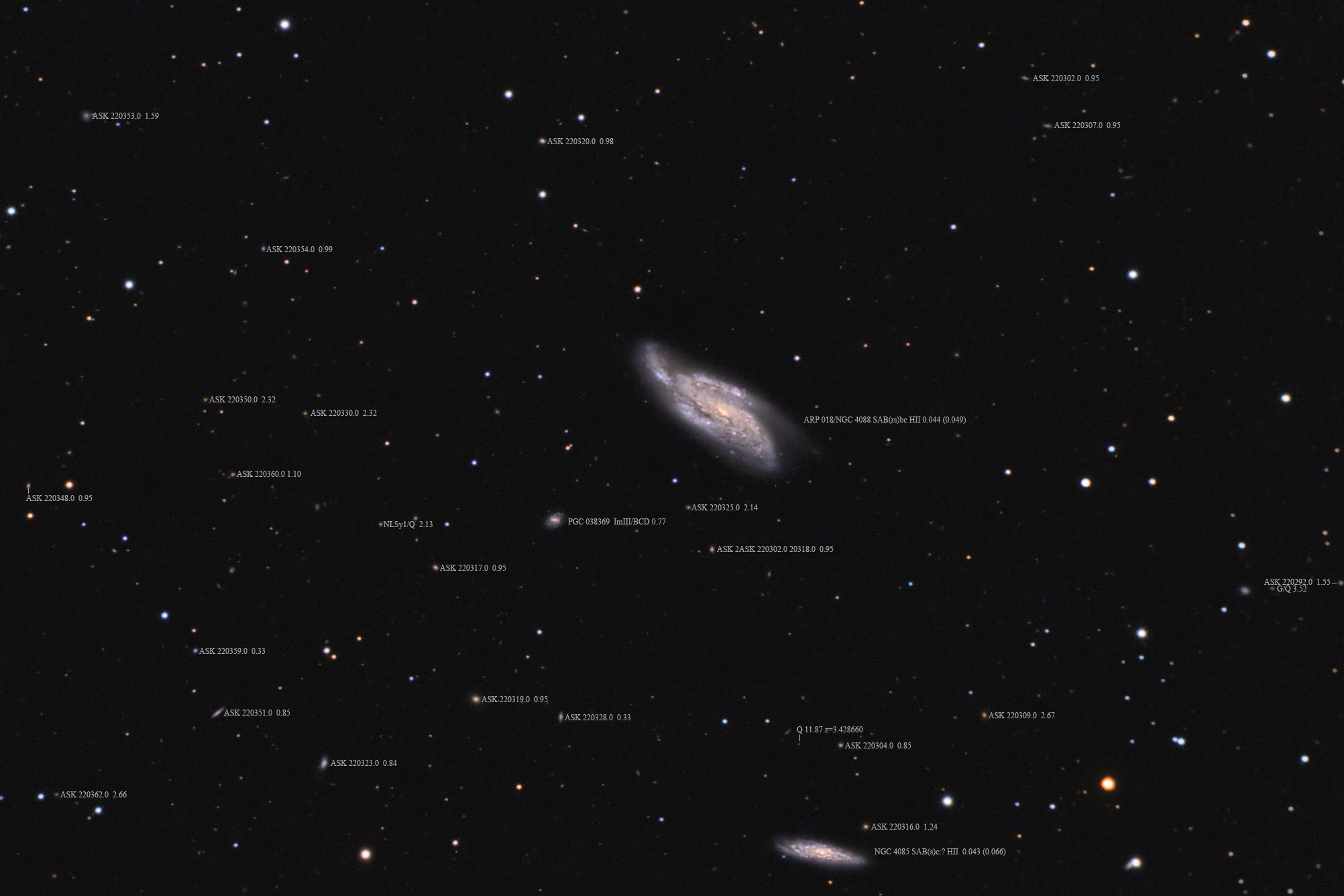| Description | Images |
Object name: NGC4088Designation(s): NGC4088, NGC4085, ARP18, Arp 18/NGC 4088 is in Arp's category for detached segments. I take it to be the piece on the northeastern end. It has a redshift that's 595 km/s while the galaxy has a redshift of 757 km/s So could it be an entirely separate galaxy? Or is the difference due to that part of the galaxy rotating toward us? NED considers it part of the galaxy. A southwestern clump has a similar difference but is receding. For this reason, I am going with NED that it is a part of the galaxy. Since NGC 4088 doesn't appear to be interacting with NGC 4085 at the bottom of my image the question remains as to what caused this odd detached piece? Related Designation(s):2MASS J12052267+5021101, 2MASS J12053422+5032210, 2MASX J12052270+5021098, 2MASX J12053418+5032205, 2MFGC 09495, 87GB 120301.3+504912, 87GB[BWE91] 1203+5049, AKARI J1205222+502110, AKARI J1205345+503230, ARP 018, ARP18, CGCG 1202.8+5039, CGCG 1203.0+5050, CGCG 269-032, CGCG 269-033, GB6 J1205+5032, HDCE 0706 NED031, HDCE 0706 NED032, HOLM 326A, HOLM 326B, IRAS 12028+5037, IRAS 12030+5049, IRAS F12028+5037, IRAS F12030+5049, ISOSS 039, ISOSS J12055+5032, LDCE 0867 NED069, LDCE 0867 NED070, LGG 258:[G93] 010, LGG 258:[G93] 040, MCG +09-20-086, MCG +09-20-089, NGC 4085, NGC 4088, NGC 4088:[RW2000] X-01, NGC4085, NGC4088, NSA 140739, NSA 161021, NVSS J120522+502111, PGC 038283, PGC 038302, SDSS J120522.70+502110.6, SDSS J120522.71+502110.6, SDSS J120534.21+503221.5, SSTSL2 J120522.71+502110.8, SSTSL2 J120534.26+503221.8, UGC 07075, UGC 07081, UMa Cluster:[PRL2014] U119, UMa Cluster:[PRL2014] U120, UZC J120522.7+502112, UZC J120534.1+503223, VV 357, [KR2001] G16, [M98j] 170 NED33, [M98j] 170 NED34, [RHM2006] SFGs 032, [RHM2006] SFGs 055, [SLK2004] 0655, [WB92] 1203+5049, |

